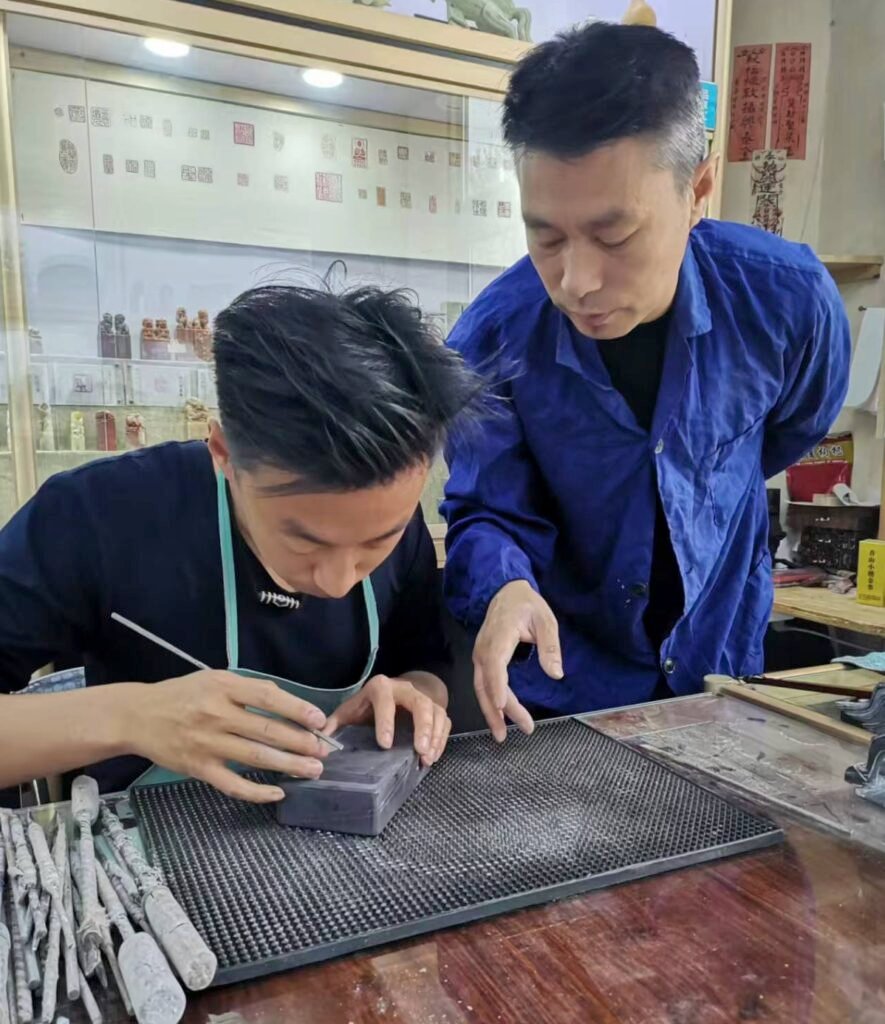Intangible Cultural Heritage Inheritors of Helan Inkstone Carving, Ma Zengqiang and Ma Zerui: A Father-Son Duo's Passion and Succession
In Yinchuan, there are many who carve Helan inkstones, but few are father-son duos working side by side. Ma Zengqiang and Ma Zerui are one such pair. As the fourth and fifth-generation inheritors of the “Ma Family Eight Styles” inkstone carving craft, the father and son share the same passion for this traditional art.
Many businesses pass from father to son, but few truly manage to preserve the craft for the next generation. In today’s fast-paced world, it’s rare to find young people patient enough to endure solitude and focus on honing a traditional skill. Yet Ma Zerui, born in 1999 and raised in Yinchuan, has always been calmer than his peers. Since 2015, when he began apprenticing under his father, Ma Zengqiang, he has earned the title of Assistant Craft Artisan in the field of industrial arts, been recognized as a district-level intangible cultural heritage inheritor in Xixia, and become the fifth-generation successor of the “Ma Family Eight Styles” inkstone-carving technique.
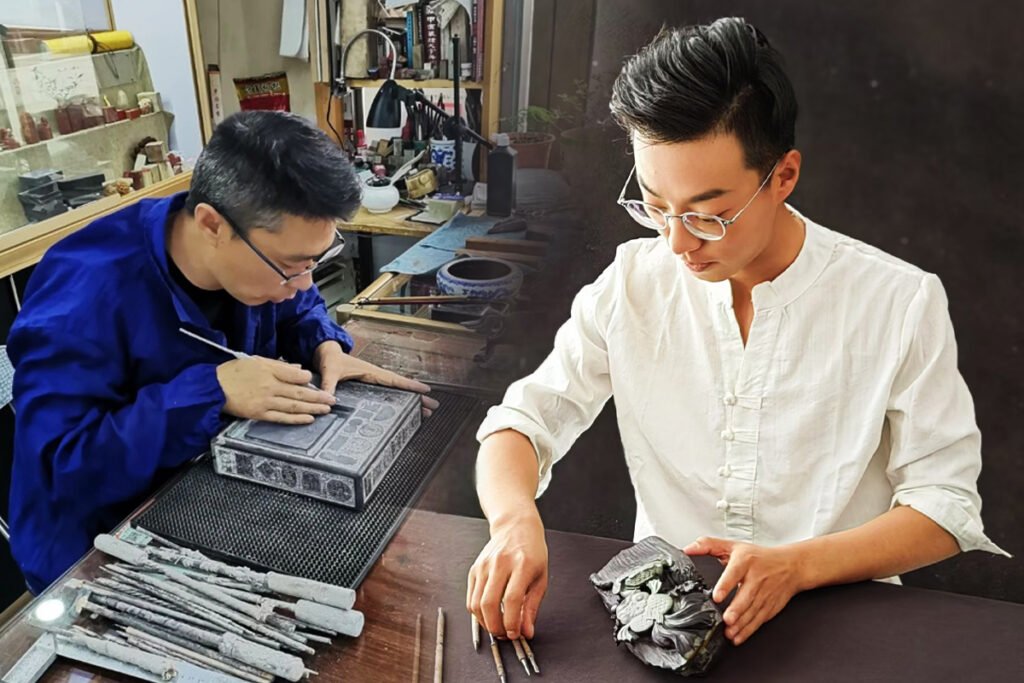
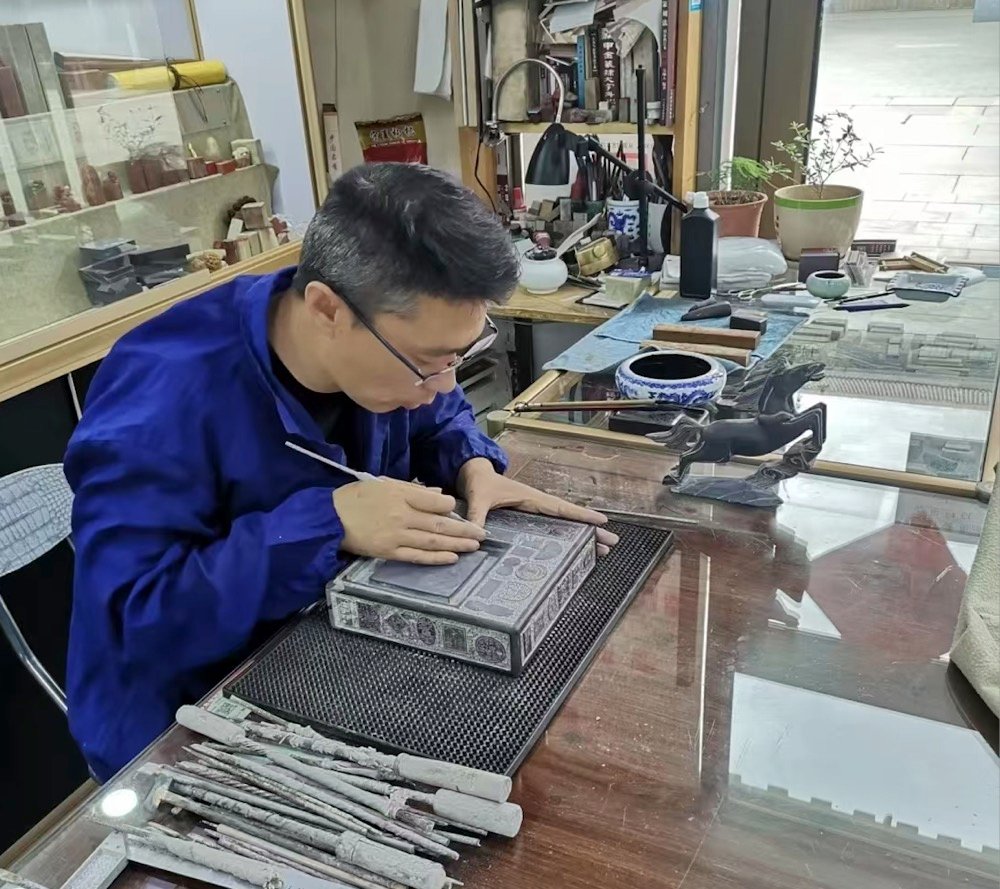
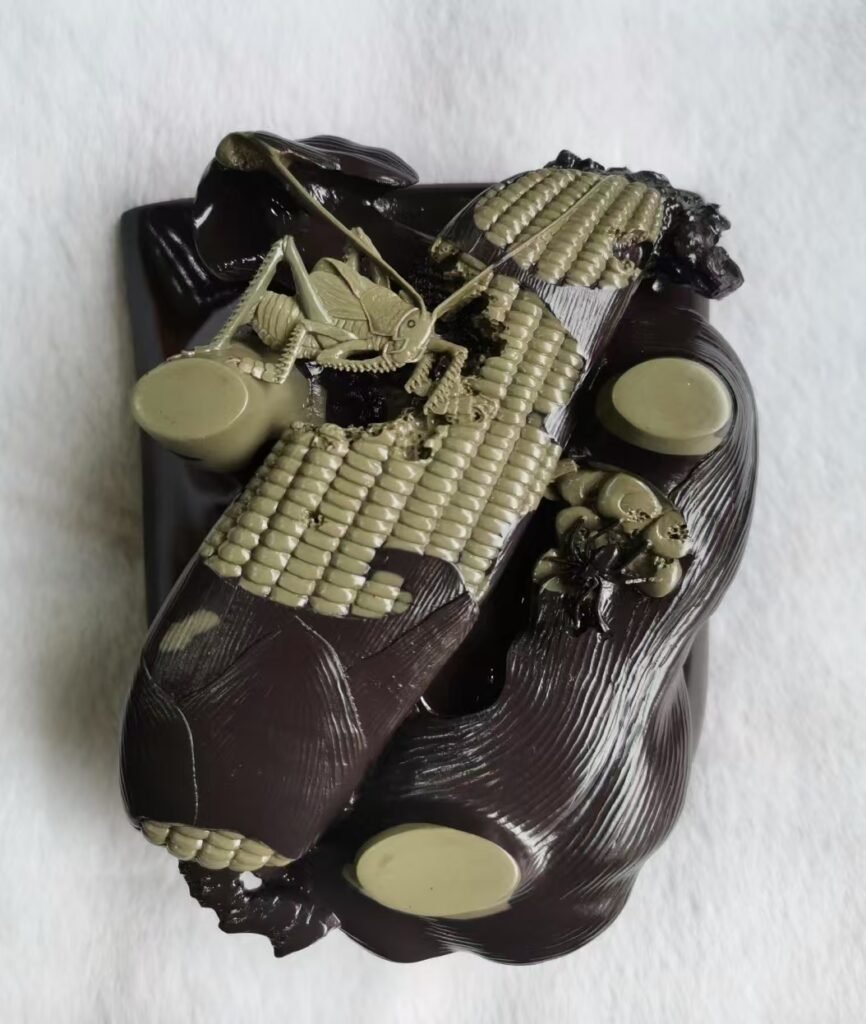
“My father’s craft was passed down through generations. The true first-generation inheritor in our family can be traced back to my great-grandfather Ma Shilu, who originally came from Taitan Village in Yi County, Hebei. He began learning inkstone carving in 1925. Now, with nearly a century of heritage reaching my generation, my thinking is simple—I cannot let the ancestral craft of the Ma family die with me.”When saying this, Ma Zerui’s tone was resolute. To him, this is not just a passion—it is his calling.
“Young craftsmen are still on their journey, needing time to hone their skills. But Ma Zengqiang, with over two decades of inkstone carving experience, has already developed a distinctive artistic style. As a municipal-level inheritor of Yinchuan’s Helan inkstone carving intangible cultural heritage, his craftsmanship stands as a school of its own.”
Born in 1977 in Taitan Village, Yi County, Hebei Province, Ma Zengqiang grew up in a family with a rich heritage of inkstone craftsmanship. In 1994, he began learning the Yishui inkstone carving technique under his father’s guidance. A turning point came when a friend gifted him a Helan inkstone – its vibrant hues and exquisite texture captivated him at first sight.”That single encounter left an indelible mark on me, and I knew I had to go to Ningxia someday,” Ma recalled. True to his calling, in 1996 he ventured to Ningxia to dedicate himself to Helan inkstone carving. Though arriving alone in a new land, his exceptional carving skills secured him a position at the Ningxia Geological and Mineral Bureau’s Goldstone Craft Company, where he specialized in designing and carving Helan inkstones.
Ma Zengqiang fondly recalls that during this period, his greatest fortune was the regular opportunity to collaborate with Shi Biao, a National Master of Chinese Arts and Crafts, and Zhong Shengquan, a Ningxia Master of Arts and Crafts. Together, they delved into research on Helan stone carving techniques and pattern design.For nearly five years, he worked with Helan stone daily—an immersive experience that gave him profound insight into the stone’s unique properties and characteristics. This hands-on knowledge became the foundation as he began developing his own distinctive carving style.
“I grew up mastering the carving techniques of Yishui inkstones, which have their own unique craftsmanship,” Ma explains. “Later, I began experimenting with blending Helan inkstone’s carving designs with Hebei’s traditional Yishui techniques—especially by creatively utilizing the stone’s natural color variations. But all this ultimately depends on one fundamental skill: a precise understanding of the stone itself.”
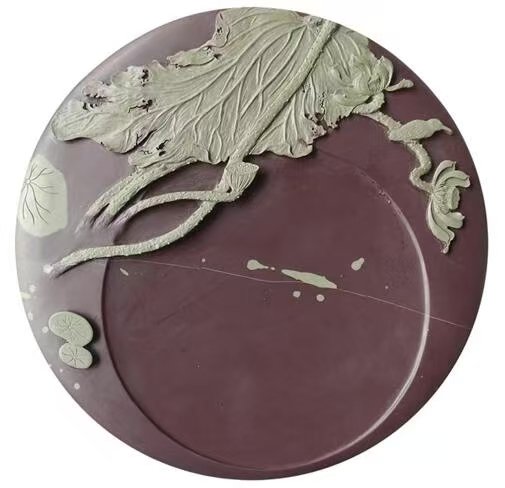
Those familiar with Ma Zengqiang’s works recognize his distinctive approach to large-scale Helan stone carvings and shallow relief (“薄意雕”) techniques. Through his innovative designs, he masterfully integrates multiple carving methods—including openwork (“镂雕”), pierced carving (“透雕”), deep engraving (“深雕”), and shallow relief—across different stone textures.His carvings of flowers, birds, landscapes, and human figures achieve remarkable three-dimensionality. Particularly noteworthy are his human depictions: vibrant rather than rigid, so lifelike they seem to breathe. This artistic vision has elevated Helan stone carving to unprecedented heights.
Speaking of shallow relief carving (薄意雕), Ma Zerui explained: “Shallow relief carving refers to extremely thin and shallow bas-relief, named for its delicate carving layers rich in artistic conception.”As a unique artistic technique, shallow relief carving developed from the antique motif decorations (博古纹饰) and brocade-border relief carvings (锦边浮雕) on stone seals during the late Ming and early Qing dynasties.Shallow relief carving is even shallower than “bas-relief.” Because its shallow engraving resembles painting, it is also called “knife painting” (刀画). Works of shallow relief carving have long been renowned for “emphasizing elegance, exquisite craftsmanship, and adherence to painting principles.” It is a distinctive art that integrates calligraphy, seal carving, and painting, existing between painting and sculpture. His father Ma Zengqiang’s work “Western Style” (《西部风情》) is an outstanding example of shallow relief carving.
When speaking of his father’s large-scale Helan stone carvings, Ma Zerui first mentioned the grand deep-relief Helan stone screen Scenery Beyond the Great Wall (《塞上风光》), completed between 2008 and 2009. This masterpiece was jointly designed and created by Ma Zengqiang and Ningxia Arts and Crafts Master Zhong Shengquan.The screen stands 2 meters tall and spans 3 meters in length, mounted on a rosewood base. Using the deep-relief technique on Helan stone, the front side vividly depicts the “Jiangnan Beyond the Great Wall”—Ningxia’s picturesque landscapes—by skillfully utilizing the stone’s unique “qiaocai” (natural color variations). Currently, it remains the largest Helan stone screen in Ningxia.
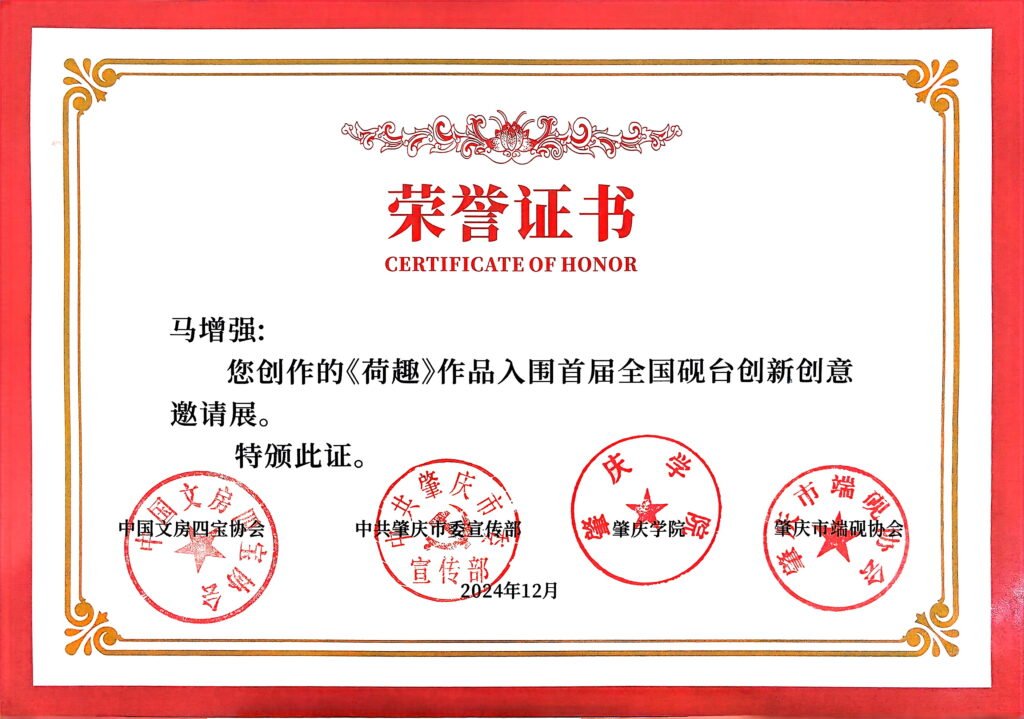
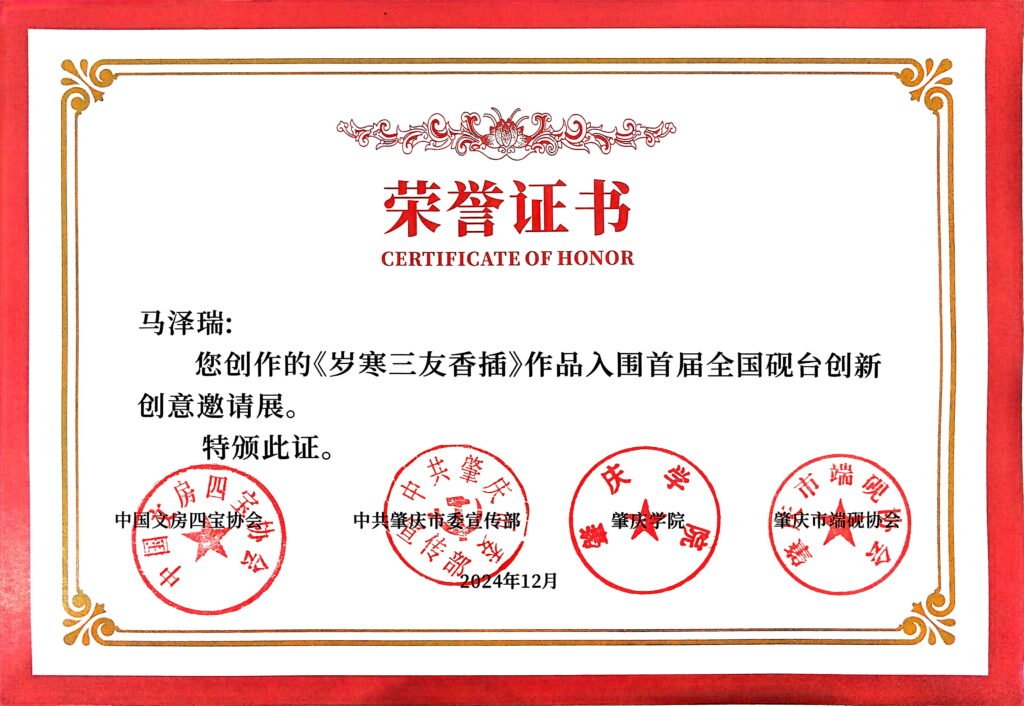
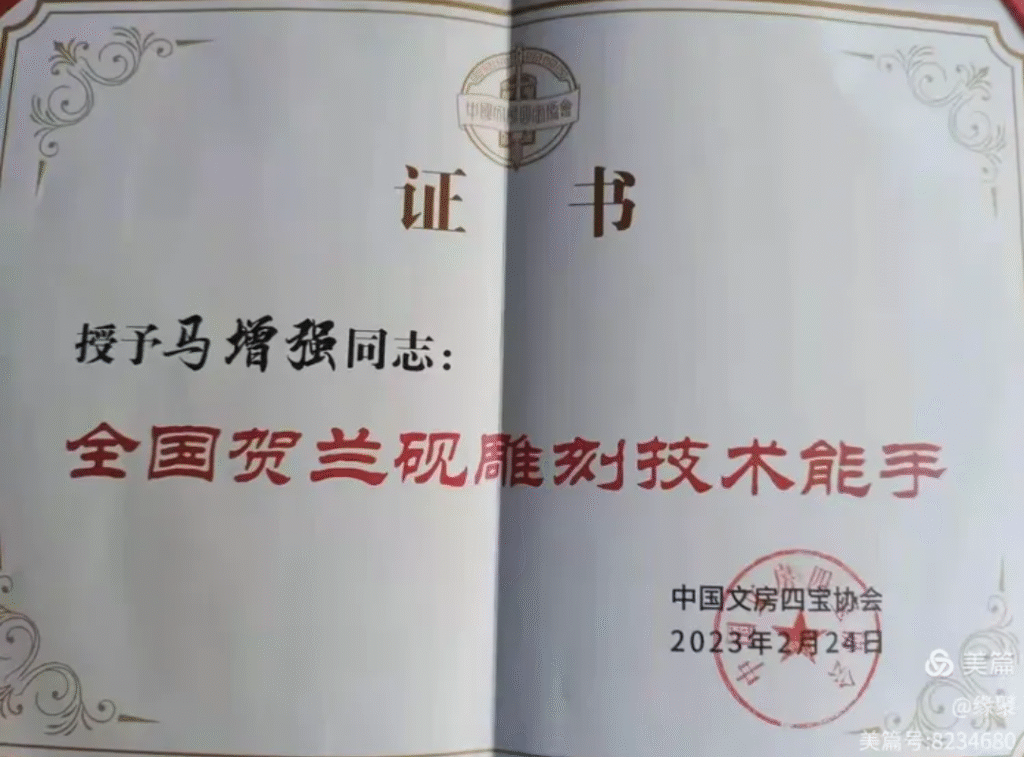
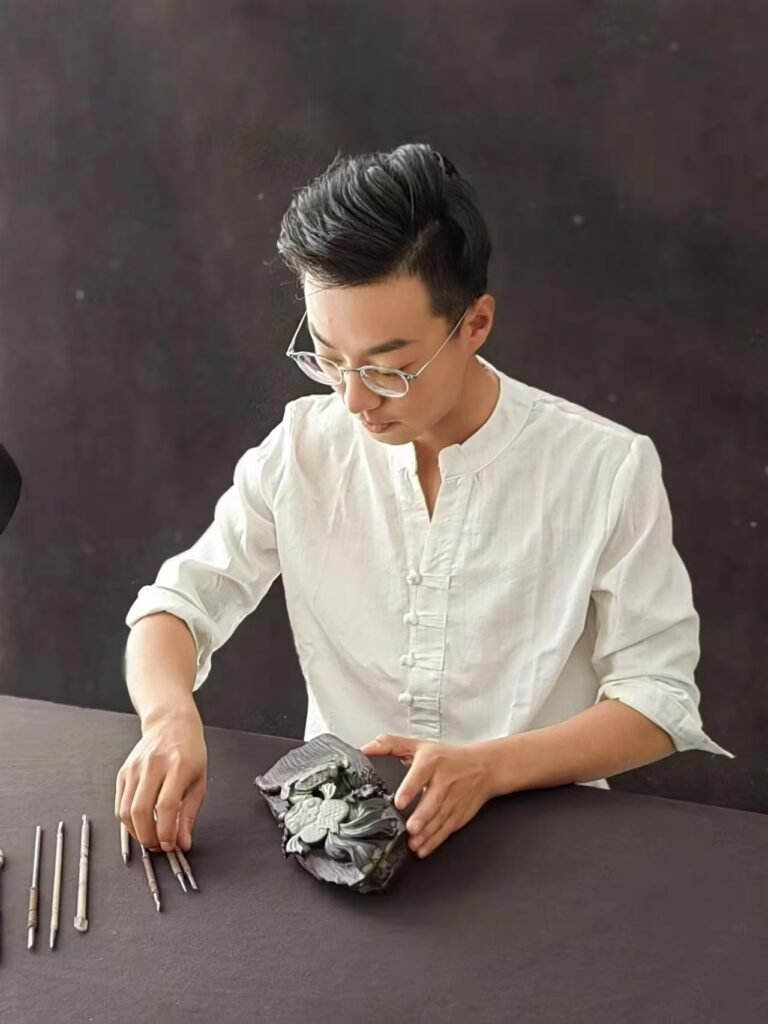
Following this, Ma Zengqiang’s carving works began receiving frequent accolades:
• 2011: Morning Toilette (《晨妆》) was collected by the Ningxia Helan Inkstone Museum
• 2013: The giant Helan stone Chinese Dragon Inkstone (《中华大家族》) entered the permanent collection of Ningxia Geological Museum
• October 2015: Won the gold prize (“Divine Craft·Hundred Flowers Award”) at the 2nd China Ethnic Arts & Crafts Treasures Exhibition
• 2016: Harvest Inkstone (《丰收砚》) received the silver award at Ningxia’s 1st “Redbud Cup” Helan Inkstone Competition
• May 2018: Multiple works including:Silk Road (《丝路》)、Autumn Rhythm (《秋韵》)、Mushroom Inkstone (《蘑菇砚》)、Joy Before Eyes (《喜在眼前》)collectively won first prizes at the “2018 Yinchuan Cultural City·Fenghuangli Intangible Heritage & Stone Appreciation Tourism Festival”
A close examination of Ma Zengqiang’s works reveals a distinctive style: archaic in form, precise in carving technique, refined through simplification, and ultimately returning to unadorned purity. His pieces particularly emphasize the beauty of artistic conception, with especially ingenious utilization of Helan stone’s “qiaocai” (natural color variations).Ma explains: “The concept of ‘qiaocai’ means allowing the stone’s natural color layers to fully reveal themselves during the carving process.””Now my greatest wish is to mentor more apprentices,” says Ma. Yet what brings him deepest satisfaction is knowing his son will walk alongside him on this path forward—a thought that fills him with profound contentment.
